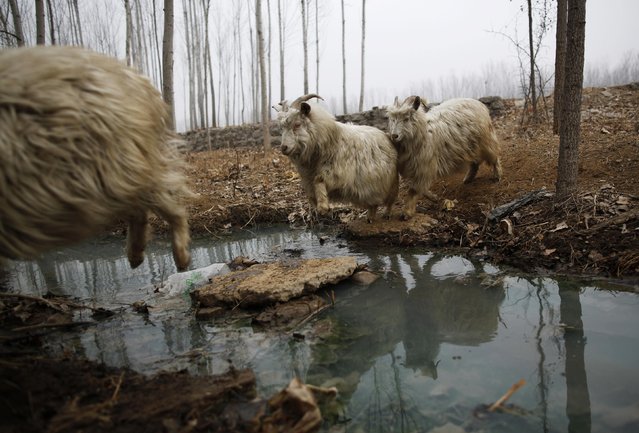
Goats jumps to cross a stream as they are driven by a herdsman at Dashiwo village, on the outskirts of Beijing January 26, 2015. The Chinese Lunar New Year on February 19 will welcome the Year of the Sheep (also known as the Year of the Goat or Ram). (Photo by Kim Kyung-Hoon/Reuters)

A herdsman takes a rest while he drives his goats at a corn field at Dashiwo village, on the outskirts of Beijing January 26, 2015. (Photo by Kim Kyung-Hoon/Reuters)
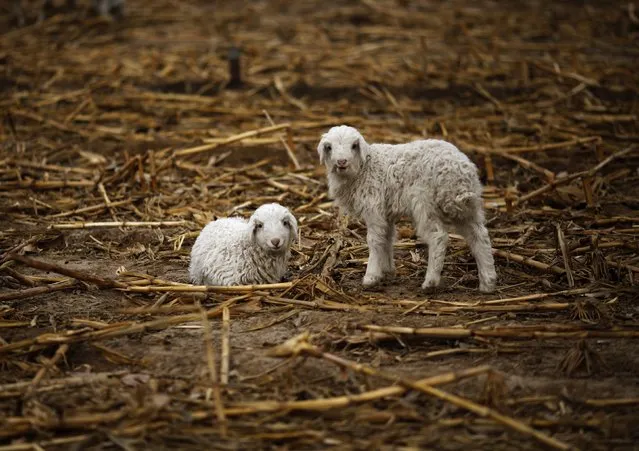
Lambs are seen in a corn field while a herdsman drives his sheep at Dashiwo village, outskirt of Beijing January 26, 2015. (Photo by Kim Kyung-Hoon/Reuters)

A herdsman drives his sheep at a corn field at Dashiwo village, on the outskirts of Beijing January 26, 2015. (Photo by Kim Kyung-Hoon/Reuters)
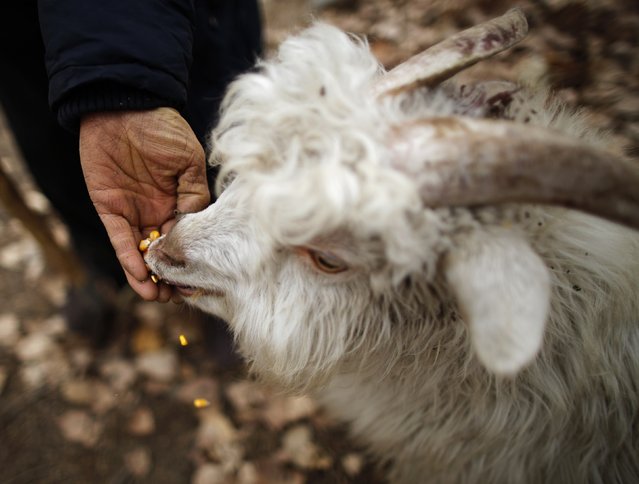
A herdsman feeds his goat with corn at Dashiwo village, on the outskirts of Beijing January 26, 2015. (Photo by Kim Kyung-Hoon/Reuters)
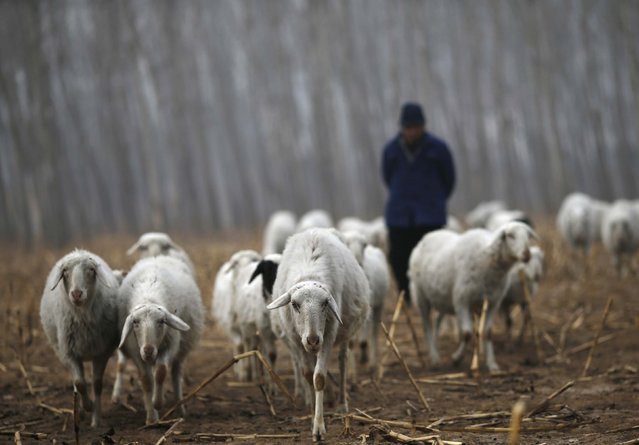
A herdsman drives his sheep at a corn field at Dashiwo village, on the outskirts of Beijing January 26, 2015. (Photo by Kim Kyung-Hoon/Reuters)
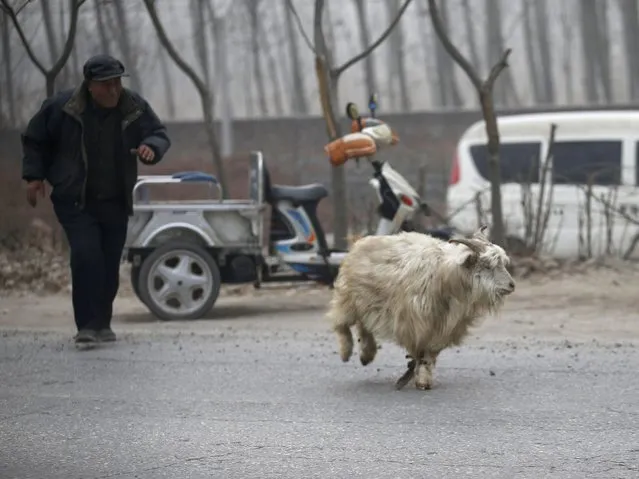
A farmer chases a goat with its front legs bound as it runs away from a slaughterhouse at Dashiwo village, on the outskirts of Beijing January 26, 2015. (Photo by Kim Kyung-Hoon/Reuters)
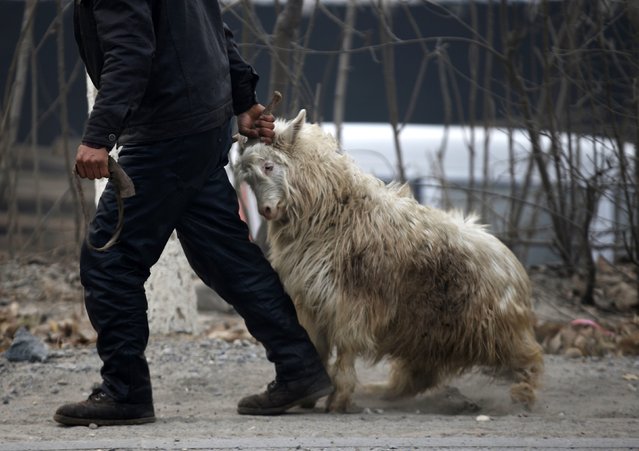
A butcher drags a goat which run away from a slaughterhouse at Dashiwo village, on the outskirts of Beijing January 26, 2015. (Photo by Kim Kyung-Hoon/Reuters)
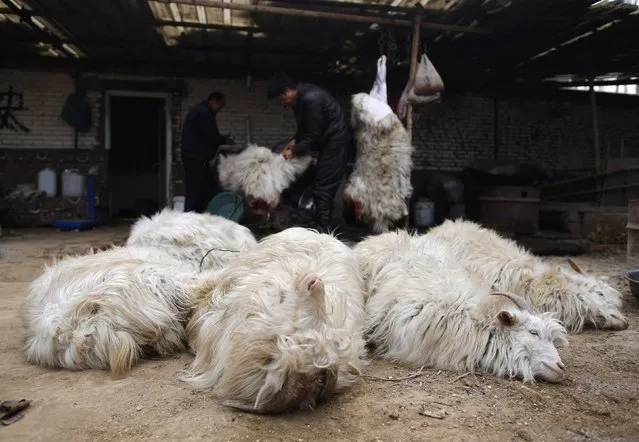
Goats whose legs are bound lay on a yard at a slaughterhouse while butchers slaughter other goats at Dashiwo village, on the outskirts of Beijing January 26, 2015. (Photo by Kim Kyung-Hoon/Reuters)
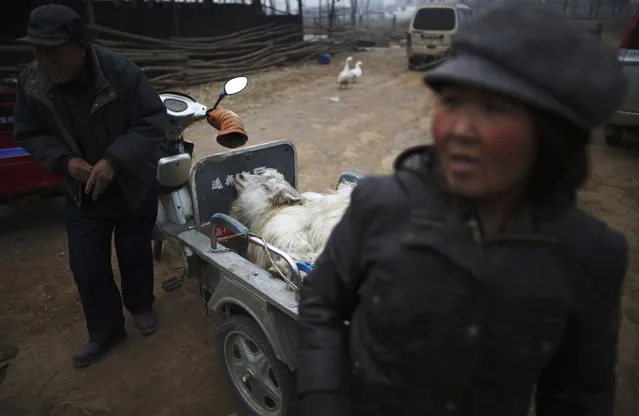
Farmers bring a goat to a slaughterhouse at Dashiwo village, on the outskirts of Beijing January 26, 2015. (Photo by Kim Kyung-Hoon/Reuters)
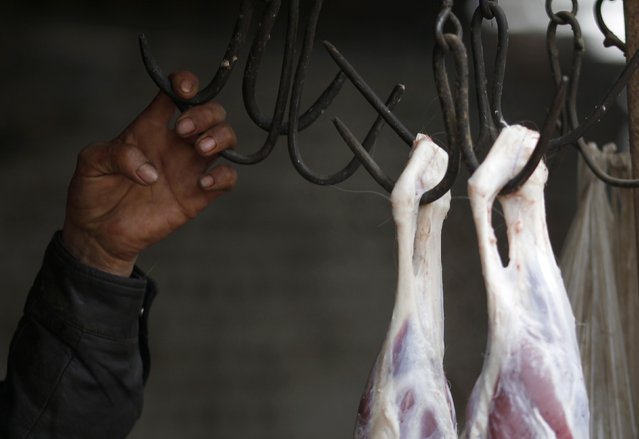
A butcher holds a hook next to hanged goat meats at a slaughterhouse at Dashiwo village, on the outskirts of Beijing January 26, 2015. (Photo by Kim Kyung-Hoon/Reuters)
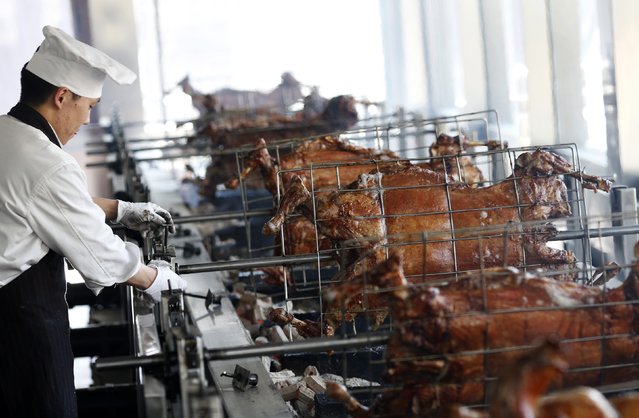
A cook controls a machine to grill lamb meats at a Mongolian style restaurant Nine-Nine Yurts in Beijing February 10, 2015. China is the world's largest producer of lamb and mutton, with a flock estimated at nearly 140 million in 2011, but output has been declining as farmable land shrinks due to urbanisation. Lamb has traditionally been consumed mainly in China's northeast, but a growing urban middle class in expanding cities wants more protein and has broader tastes. The Chinese Lunar New Year on February 19 will welcome the Year of the Sheep (also known as the Year of the Goat or Ram). (Photo by Kim Kyung-Hoon/Reuters)
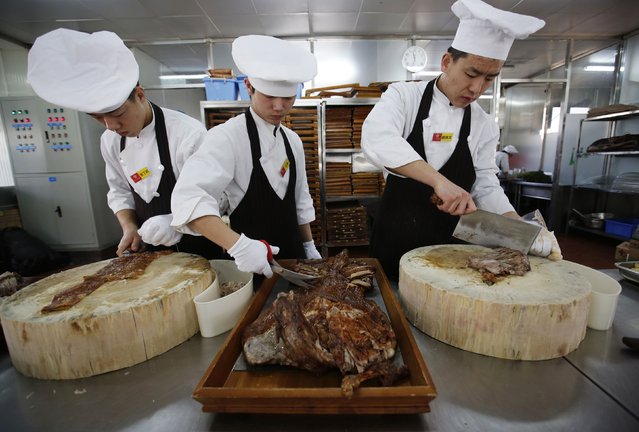
Cooks cut grilled lamb meats at a Mongolian style restaurant Nine-Nine Yurts in Beijing February 10, 2015. (Photo by Kim Kyung-Hoon/Reuters)
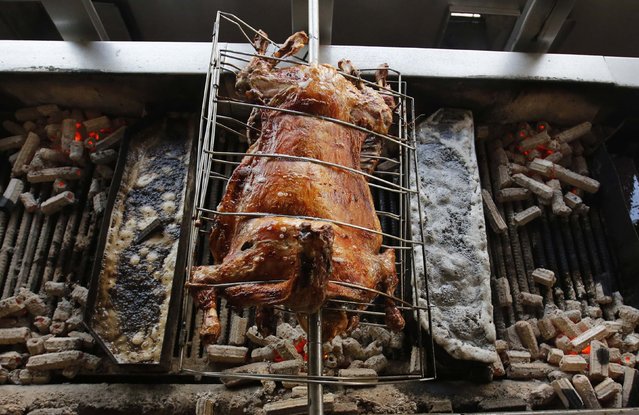
Lamb meat is grilled on charcoal at a Mongolian style restaurant Nine-Nine Yurts in Beijing February 10, 2015. (Photo by Kim Kyung-Hoon/Reuters)
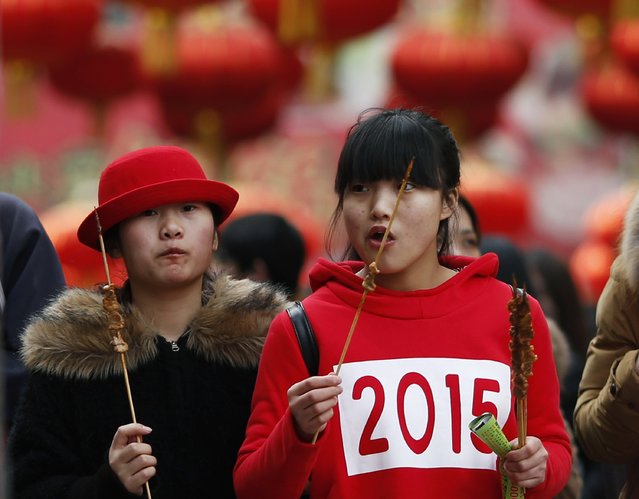
Women eat lamb meat on skewers at a shopping district in Beijing February 10, 2015. (Photo by Kim Kyung-Hoon/Reuters)
11 Feb 2015 13:23:00,
post received
0 comments
